
With its tropical hot climate, Thailand is largely a year-round destination – in any month, somewhere will be fantastic for your vacation. The best time to visit Thailand really depends on where you plan to go and what you plan to do!
Overall, Thailand follows three main seasons, with September, the wettest month, April the hottest month and December, the ‘coolest’ (relatively speaking), but there are regional variations along with global warming irregularities.
Micro-climates that could affect vacation plans are especially in the south, home to most of Thailand’s major island and beach destinations and hot throughout the year. The south-west coast and Andaman Sea, with popular islands, Phuket, Krabi, Koh Lanta and Phi Phi, generally experience rains from May to October – like much of Thailand. However, over in the south-east and Gulf of Thailand, home to popular Koh Samui and other islands (Koh Tao and Phangan, etc), the rainy season generally falls late September to late December. Whichever side of Thailand you choose, there will be guaranteed blue skies and clear seas.
Your vacation may also coincide with one of Thailand’s annual festivals, some of which are highlighted here.
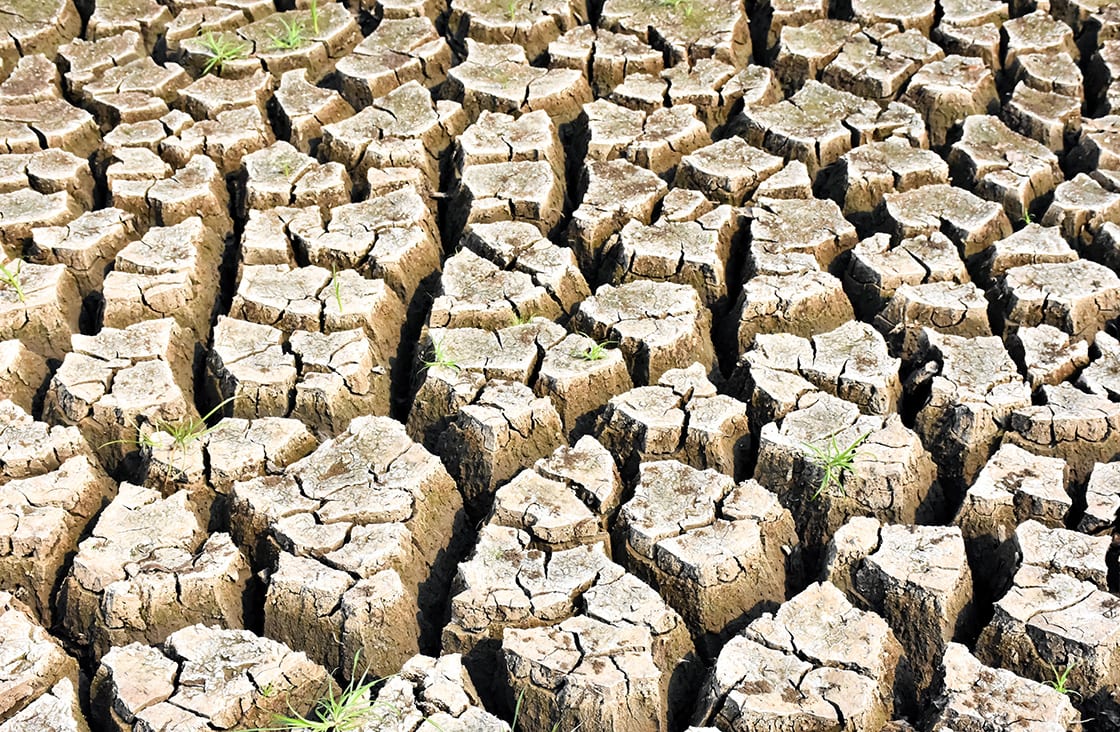
The most popular time to visit Thailand is between November and February, blessed with fantastic weather and a relatively dry, cool and pleasant climate – arguably, the most comfortable season to travel. Daytime temperatures rarely rise above 95°F(35°C). With the tailing-off of the rainy season in November, there should be little rainfall in most parts of the kingdom (although with any tropical destination, a burst of rainfall is always unpredictably possible).
Exceptions include the Gulf of Thailand’s islands, including Koh Samui and Phangan and further north, the eastern seaboard islands, including Koh Chang and Kood, which generally experience monsoonal rains well into late December: expect rough seas, leading to closure of water sports activities, diving and boat services.
December is the year’s coolest month, with the least rainfall and humidity; this season is ideally the best time to visit Bangkok, with the most comfortable temperatures, averaging 87-88°F (31-32ºC), for sightseeing. With Christmas and New Year vacations, December and January are Thailand’s peak tourist months and busiest time of the year; accommodations in major tourist destinations get fully booked and hotel and flight prices can skyrocket.
With maximum sunshine and minimum rainfall, the Andaman coast is at its best: sea conditions calm and clear, with high underwater visibility – perfect for swimming, snorkeling, diving, boating and beach activities. Major destinations, including Phuket and Koh Phi Phi, are full to the brim with tourists. Meanwhile, late December marks the end of the rainy season for the Gulf of Thailand, so islands like Koh Samui start to get busy again. January is one of the best times to visit the eastern seaboard islands, which rank as the wettest area of Thailand year-round.
This dry season is also an ideal time to visit Thailand’s mountainous north, including Chiang Mai and Chiang Rai, with weather is at its most pleasant for outdoor activities like hill trekking, river cruises, wildlife spotting and camping. Temperatures can be surprisingly cool and crisp at night and early morning in the mountains, dropping to around 59°F (15°C), so remember to bring warm clothes. February marks the end of Thailand’s official high season, meaning less crowds, and lower accommodation and travel prices, but still brilliant sunny days and little rainfall. All the southern islands make wonderful beach getaways, with water conditions perfect for snorkeling, diving and boating.
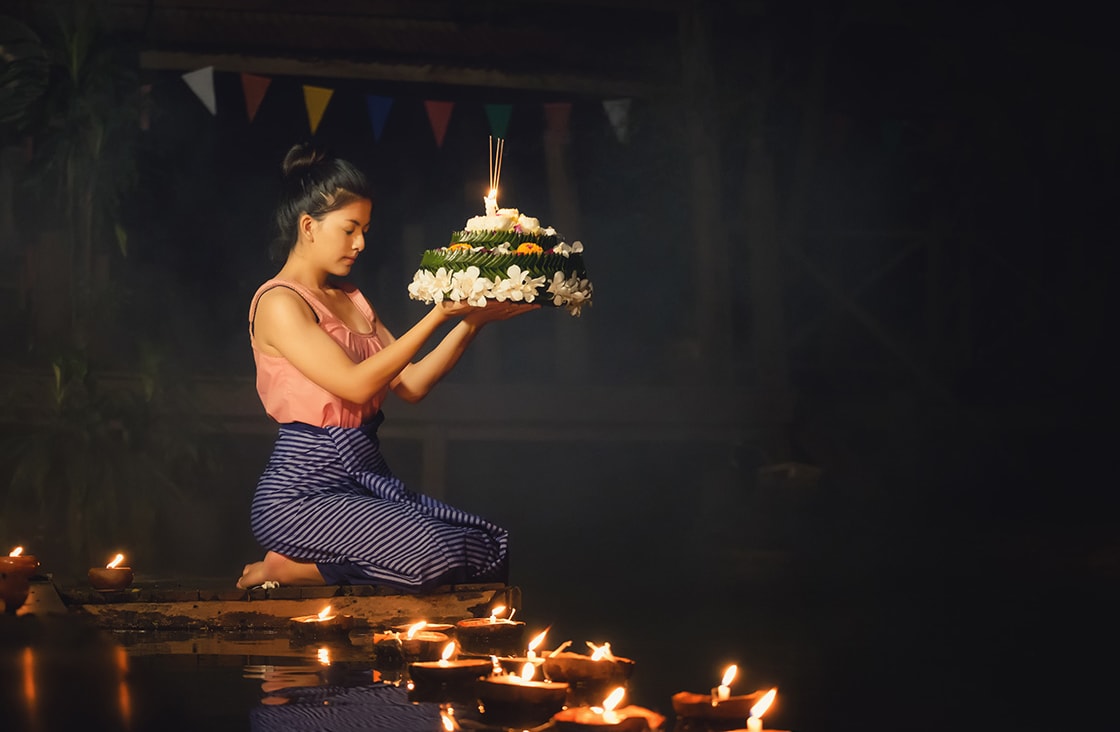
One of Thailand’s most enchanting festivals, Loi Krathong falls on full moon night in early November, marking the rainy season’s end with grand celebrations, parades and fireworks across the country. The main festivity are thousands of glowing paper lanterns (khratong) simultaneously released into the night skies and lotus-shaped mini-lanterns released onto the rivers – a symbolic gesture of moving on from past sufferings. These lanterns, illuminated by candles, are a spectacular sight, but Chiang Mai’s Yi Peng Lantern Festival is the most impressive of all, attracting thousands of international visitors.
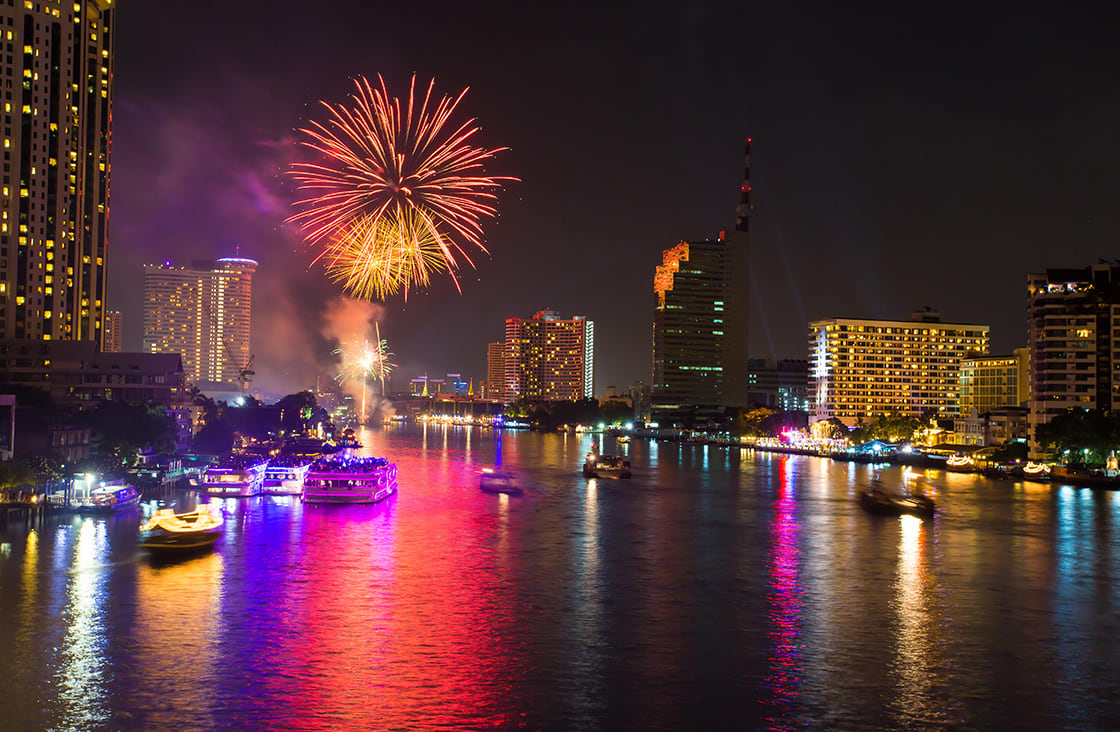
With Thailand predominately a Buddhist country, Christmas isn’t officially celebrated by Thai people; however, Bangkok and other major tourist destinations mark Christmas with special events; the cooler climes in the north and especially, Chiang Mai, make the most atmospheric places to celebrate. While the Thai New Year falls in April, the international New Year is universally embraced; Bangkok is the best place to celebrate, with spectacular fireworks displays along the Chao Phraya River.
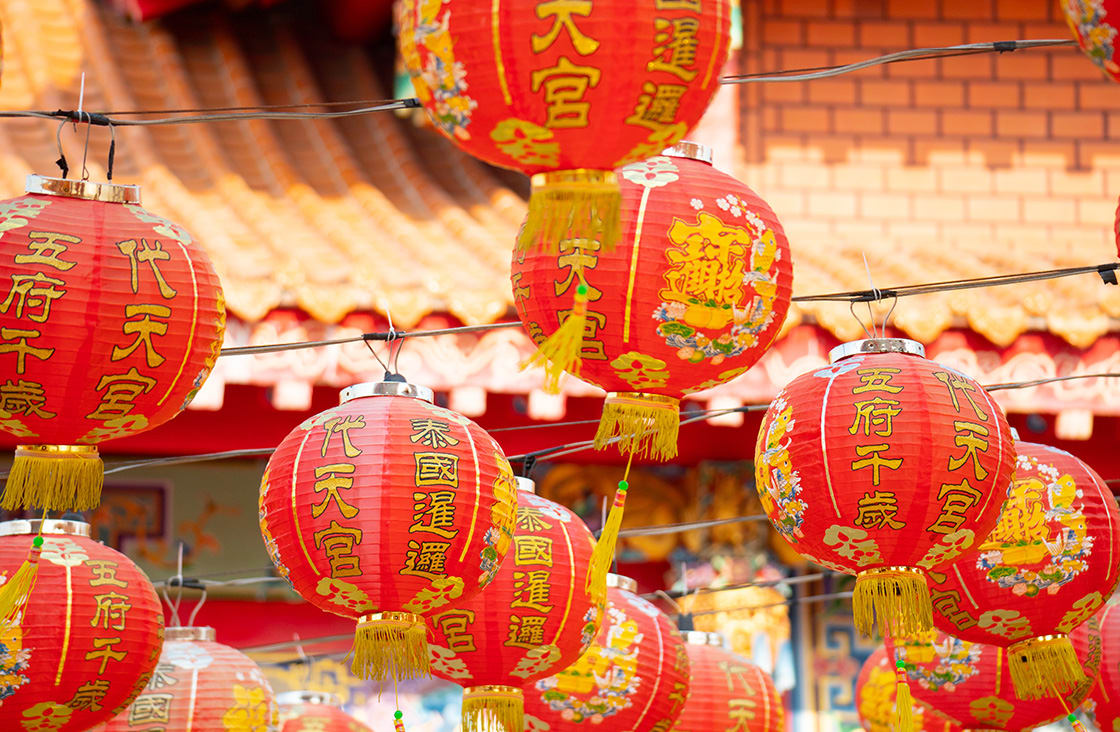
Also known as ‘Spring Festival, Chinese New Year dates are determined by the Lunar calendar, but generally fall late January to early February. Although not a public holiday, the Chinese Lunar New Year is celebrated by Thailand’s Chinese communities; the best places are Phuket’s Old Town and Bangkok’s Chinatown, where traditional street festivities feature cultural performances, dragon dances, food fairs and firecrackers.
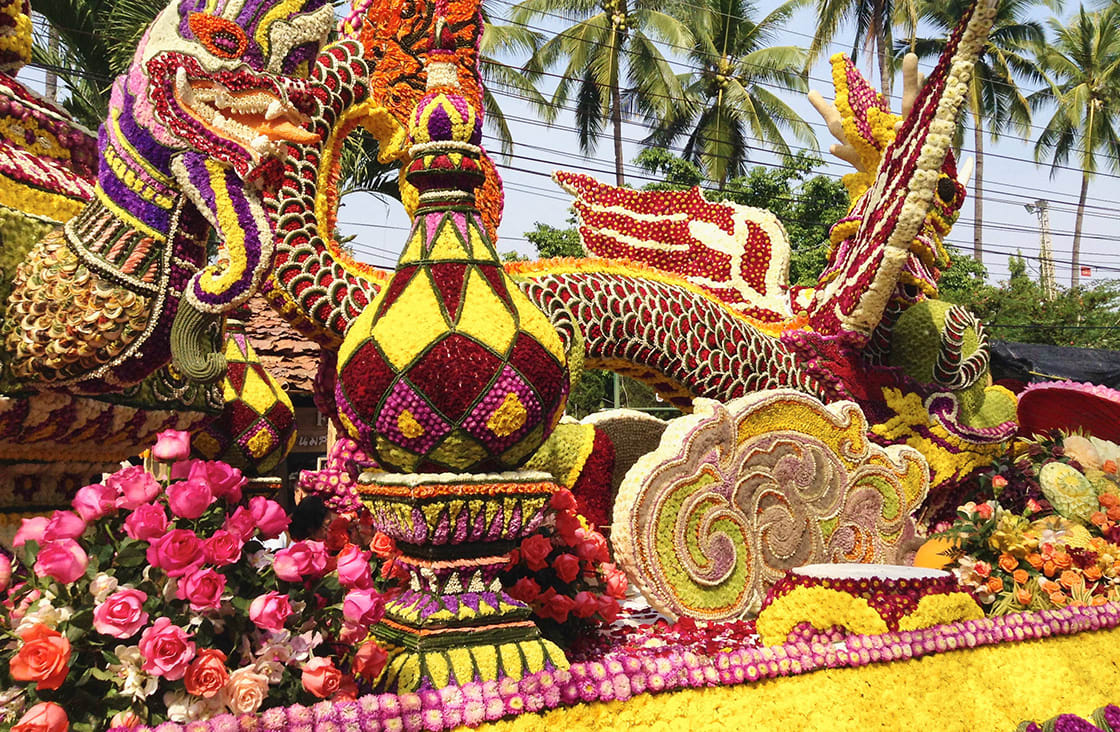
Marking the end of the north’s ‘cool season,’ this three-day flower extravaganza is hosted in Chiang Mai over the first weekend in February, with the region’s beautiful flowers showcased at floating parades, exhibitions and horticultural competitions.
Extending from March to May, this dry season is still a fantastic time to visit Thailand, with overall fine weather and scant rainfall – albeit, high humidity. Almost everywhere, you can enjoy sun-kissed beaches, clear blue skies and calm, clear sea conditions. Naturally the southern islands are busy, especially the Andaman Sea area – again, book accommodations well in advance. March is the prime diving season for the remote Similan and Surin Islands, which boast world-class diving sites.
Across Thailand, April is the hottest month of the year; it’s not unusual for temperatures to reach 104°F (40 ºC) in some cities, including Bangkok! In Thailand’s northern regions, cooler climes morph to blistering heat – temperatures can exceed 95°F (30 ºC) in Chiang Mai and Chiang Rai, which some may find uncomfortable (Thailand does however have widespread air-conditioning systems). Note from late February well into March, in the northern regions and especially around Chiang Mai, local farmers still practice annual ‘slash and burn’ farming traditions, resulting in an accumulation of smog and haze across the region – something to consider when planning your trip.
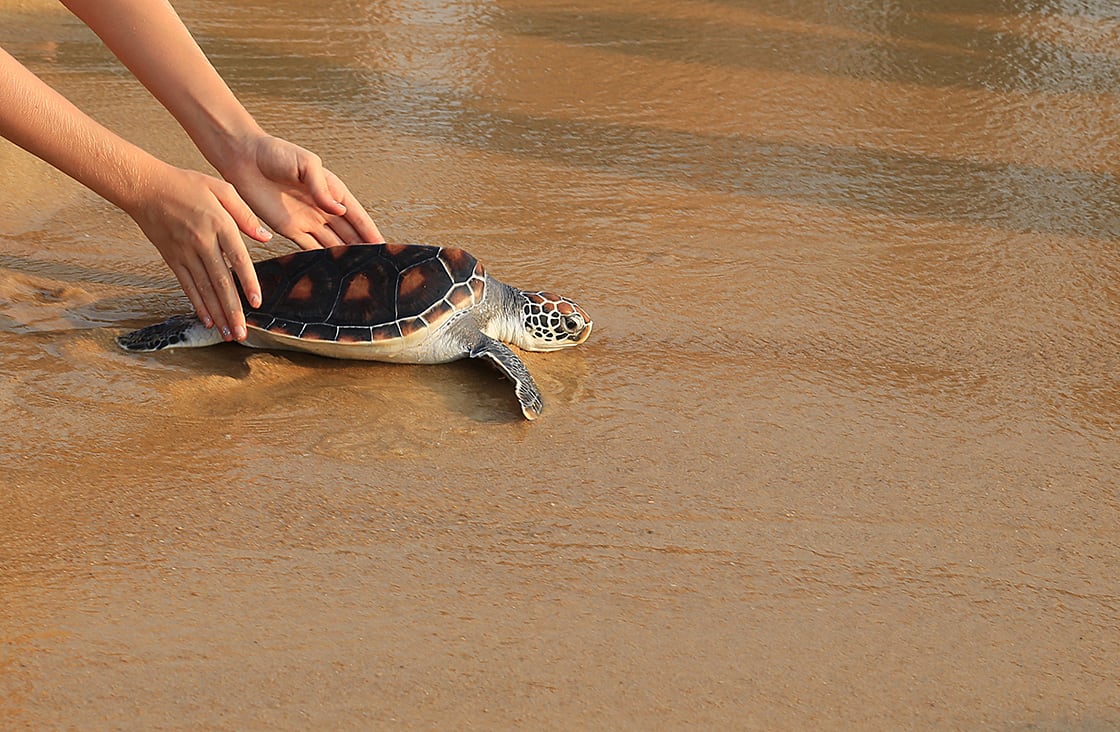
If you’re in the Phang Nga Bay area during the first ten days of March, don’t miss this magical annual event, with young turtle hatchlings raised at a local research center ceremoniously released into the ocean. This festival helps generate funds for the continued conservation of the turtles.
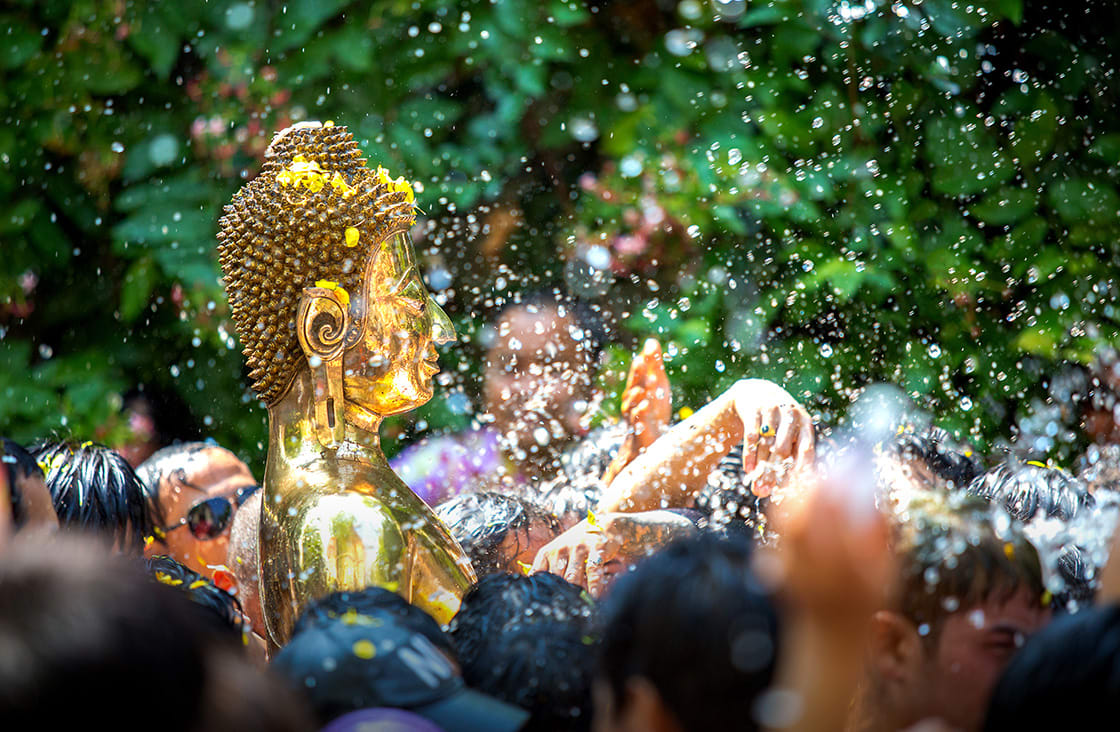
From April 13 to 15, Songkran ( ‘Thailand Water Festival) celebrates the Thai Buddhist New Year and is the nation’s most important festival, deeply rooted in centuries-old rituals which symbolize new beginnings. Traditionally, there are religious ceremonies and street processions, and at Buddhist temples, holy water used as part of a spiritual cleansing ritual banishing bad luck and sins to start the New Year afresh.
Nowadays, Songkran has also evolved as three days of world-renowned wild and watery mayhem across the country – Bangkok and Chiang Mai boasting the biggest celebrations. Locals and visitors take to the streets armed with water pistols, buckets and hoses for ‘alternative blessings’ and the planet’s biggest water fight. Songkran is a fun way to cool off in Thailand’s hottest month, but note many businesses and public offices close for several days, travel can be disrupted and hotels get fully booked.
Roughly, from late May to late October, the six-month rainy season delivers most of Thailand’s annual rainfall, with monsoons blowing in from all directions. Temperatures are moderately high but there are high humidity levels.
Statistically, June is the driest month during this low season, but by July, rainfall tends to be on the increase. Most of the southern islands, the Andaman Sea (Phuket, Krabi, Similan Islands, etc) and eastern seaboard (including Koh Kood), experience monsoonal weather, at times, bringing heavy rainfall, strong winds and turbulent waves until the end of October. Activities like watersports, boating and diving may be suspended or severely disrupted.
However, the Gulf of Thailand islands are relatively well protected from the monsoonal climate, experiencing fewer showers and generally bright and sunny weather and clear, calm waters; Koh Samui gets particularly busy over the school vacation period.
In August, Northern Thailand receives its heaviest annual rainfall, especially in Chiang Mai and across the country, September is the wettest month of the year – not good news for beach-goers, divers and trekkers. October heralds the end of Thailand’s rainy season, although the Gulf of Thailand island’s start experiencing monsoonal rains from now until December; rough seas leading to the closure of water sports and boat and beach activities.
Note, even during the rainy season with its tropical storms and heavy downpours, temperatures remain hot and rains may not last all day, rather, confined to short bursts in late afternoon, early mornings or nighttime, with parts of the day still drenched in sunshine. Actually, the rainy season can be an enjoyable time to travel in Thailand: tourist attractions and beaches are less crowded and flights and accommodations more affordable, with some low season promotions.
In the north and central provinces, the rainforests, hills and national parks are at their lushest and most vibrant green, while countless waterfalls are at their most impressive.
The annual Koh Samui Regatta coincides with the ocean winds’ picking-up at the end of May and ideal sailing conditions. This internationally renowned, five-day sailing event attracts hordes of participating teams and boat lovers from across the globe, with a variety of races hosted around the island and plenty of partying on dry land.
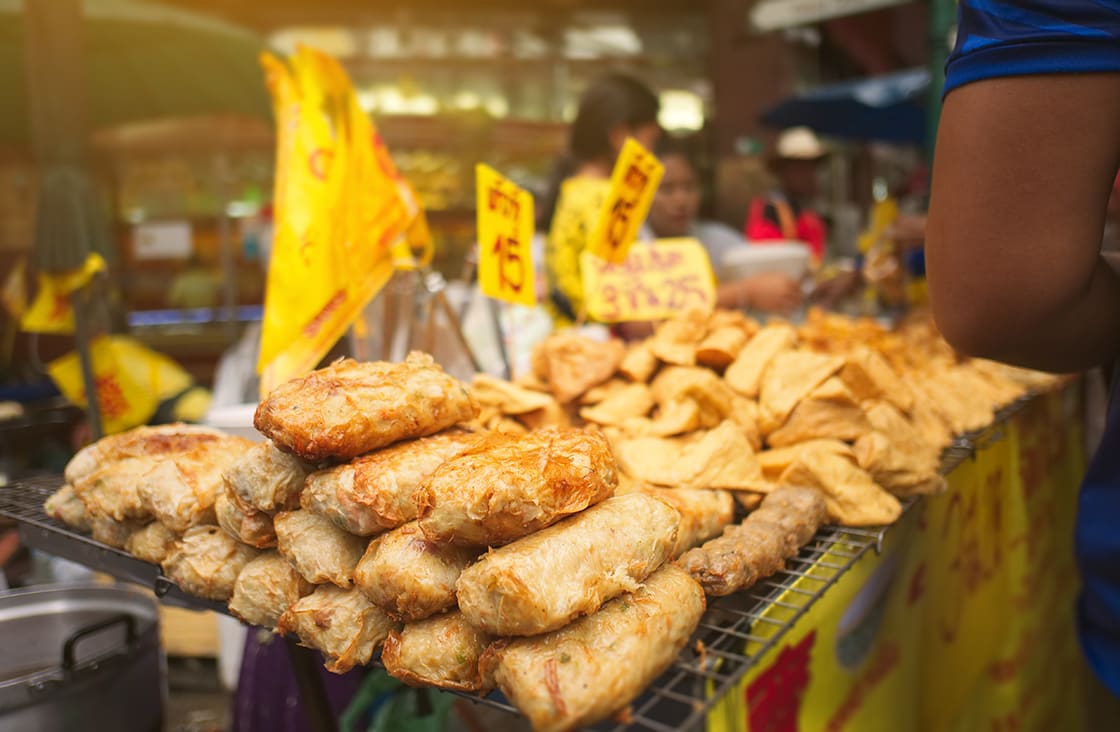
Celebrated by Phuket’s large Thai-Chinese community, this nine-day vegetarian festival observes the Taoist-Chinese belief that abstinence from meat during the ninth lunar month brings good health and serenity – and more! Major festivities in Phuket’s historic Old Town are especially significant on the sixth day, when local devotees perform extreme acts of self-mutilation in a trance-like state, as it is believed, the Gods can enter the body and evil spirits will be banished from town!
While Rainforest Cruises aim to provide accurate and up-to-date information, we make no representations as to the accuracy or completeness of any information herein or found by following any link on this site. Rainforest Cruises cannot and will not accept responsibility for any omissions or inaccuracies, or for any consequences arising therefrom, including any losses, injuries, or damages resulting from the display or use of this information.




